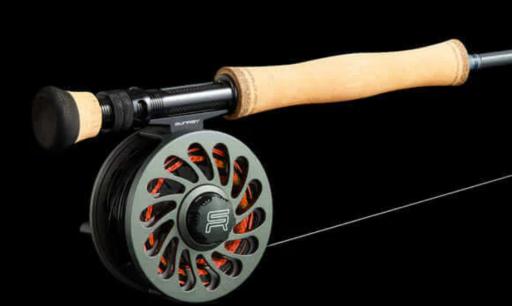It seems to me that the majority of Fishsurfing App users are based in Europe. With this in mind, I decided to write this article to address the common misconception about how easy salmon fishing in Canada is and to shed light on some key aspects of our fishing regulations.
While most salmon fishing videos from Canada may show anglers reeling in one fish after another, this is not as typical as it seems.

My favourite salmon species to target, Coho salmon, are a prized species for anglers in British Columbia, known for their aggressive strikes, exciting fights, and delicious meat. However, understanding the distinction between hatchery and wild Coho salmon is crucial for both conservation efforts and compliance with provincial fishing regulations, particularly on rivers like the Cheakamus River, my favourite river to fish, which flows between the world-renowned ski town of Whistler and the coastal town of Squamish.
Hatchery vs. Wild
- Hatchery Coho Salmon

Hatchery Coho are bred in controlled environments (Hatcheries are typically built a few kilometers upstream from the river's confluence with the ocean) and released into rivers and streams to bolster fish populations and support recreational fisheries.
In British Columbia (BC), these fish are marked by the absence of an adipose fin, which is clipped off before their release by volunteers working at these hatcheries. Hatchery programs ensure that anglers can enjoy sustainable fishing opportunities while reducing pressure on the wild stock.
- Wild Coho Salmon

Wild Coho are naturally spawned and raised in the river systems of British Columbia. These fish play a critical role in maintaining genetic diversity and ecosystem health. Unlike their hatchery counterparts, wild Coho retain their adipose fin—a small, fleshy fin located between the dorsal fin and tail.
The survival of wild Coho salmon is threatened by habitat destruction, climate change, and sometimes overfishing, making their protection a top priority for fisheries management in BC.
Fishing Regulations for Coho Salmon on the Cheakamus River
The Cheakamus River, flowing through the stunning landscape near Squamish, BC, is a beloved fishing destination. Its cool, clean water supports a healthy population of Coho salmon, making it an excellent opportunity for anglers. However, strict regulations are in place to preserve the balance between recreational fishing and conservation.

Daily Quota for Coho Salmon
As of today (December 15, 2024) the daily limit for Coho salmon on the Cheakamus River is 1 hatchery-marked Coho per day & only from September 15 to January 31, this means you can’t keep any Coho salmon outside of this time period. Wild Coho salmon must be immediately released unharmed. This regulation reflects efforts to prioritize the conservation of wild Coho stocks while still allowing anglers to retain hatchery fish.
Also, all Coho must measure 25cm or more, however, this doesn’t really limit anyone as I don’t remember ever catching one smaller than 25cm. I would say the average size is around 70cm.

Here’s the catch: since you’re allowed to keep only one Coho salmon a day, and it must be from a hatchery, it’s not uncommon to catch dozens of coho—only to find they’re all wild! As a result, you may end up going home empty-handed if you were planning to keep a fish for a meal.
Over the past 10 years of fishing this river, I’ve observed the ratio to be approximately 1 hatchery salmon for every 10 wild ones.
Gear and Techniques
When targeting Coho salmon in the Cheakamus River, it’s essential to use single barbless hooks as required by provincial law. This minimizes injury to fish that must be released. Anglers often use spoons, spinners, and jigs, as well as fly-fishing techniques, to entice these aggressive fish.
Using a single barbless hook significantly reduces your chances of landing a hooked fish; however, it greatly increases the fish's chances of survival after being released.

Once again, using a barbed fishing hook while fishing for salmon is illegal in most rivers across British Columbia
Seasonal Considerations
Coho salmon typically return to the Cheakamus River from late summer through the fall with the season peak to be in late October/beginning of November. However, regulations, including retention limits and open fishing areas, can vary seasonally or year to year.
It’s super important to always check the latest updates from the Department of Fisheries and Oceans (DFO) & BC Freshwater Fishing Regulations online before heading out as the regulations might change any day.

Tenderfoot Hatchery located on the Cheakamus River
Conservation Matters
Adhering to these regulations is not just about avoiding fines and records in your criminal record check; it’s about ensuring that BC’s salmon populations thrive for future generations. Anglers play a vital role in conservation by properly identifying hatchery vs. wild Coho, respecting quotas, and handling fish carefully during catch & release.

The Cheakamus River offers incredible fishing opportunities, but it’s our shared responsibility to protect this iconic species. By understanding the difference between hatchery and wild fish and complying with all other fishing regulations, anglers can contribute to the health and sustainability of BC’s salmon populations.
Enforcement of Fishing Regulations
In British Columbia, Conservation Officers play a crucial role in enforcing fishing regulations to protect the province's natural resources. They have the authority to check fishing licences, inspect your catch, and ensure compliance with local fishing laws.
Conservation Officers are fully armed and carry firearms at all times, reflecting the seriousness of their duties, which often involve interactions with potentially dangerous wildlife or individuals. Their approach to enforcement can be both thorough and surprising—it's not uncommon for them to land a helicopter right next to anglers in remote locations to conduct checks. This combination of authority and mobility ensures they can effectively monitor even the most secluded fishing spots to uphold conservation efforts.

B.C. Conservation Officers departing in a helicopter after inspecting my fishing license
So as always, please respect the local regulations & Tight lines and Enjoy your day out there!














